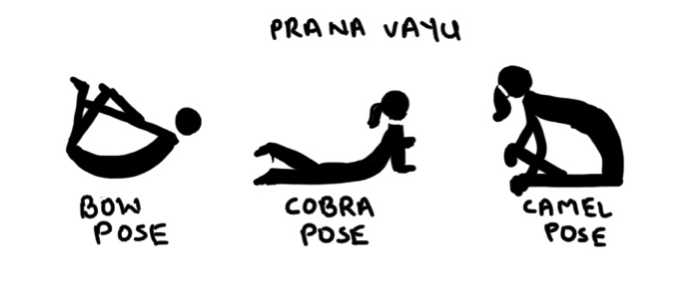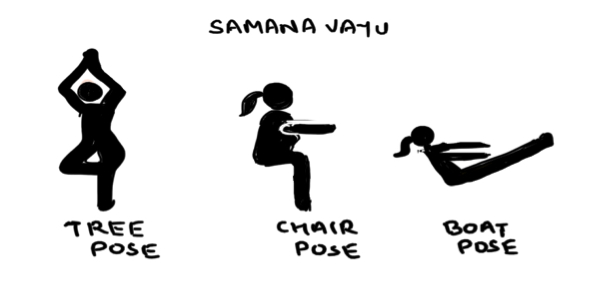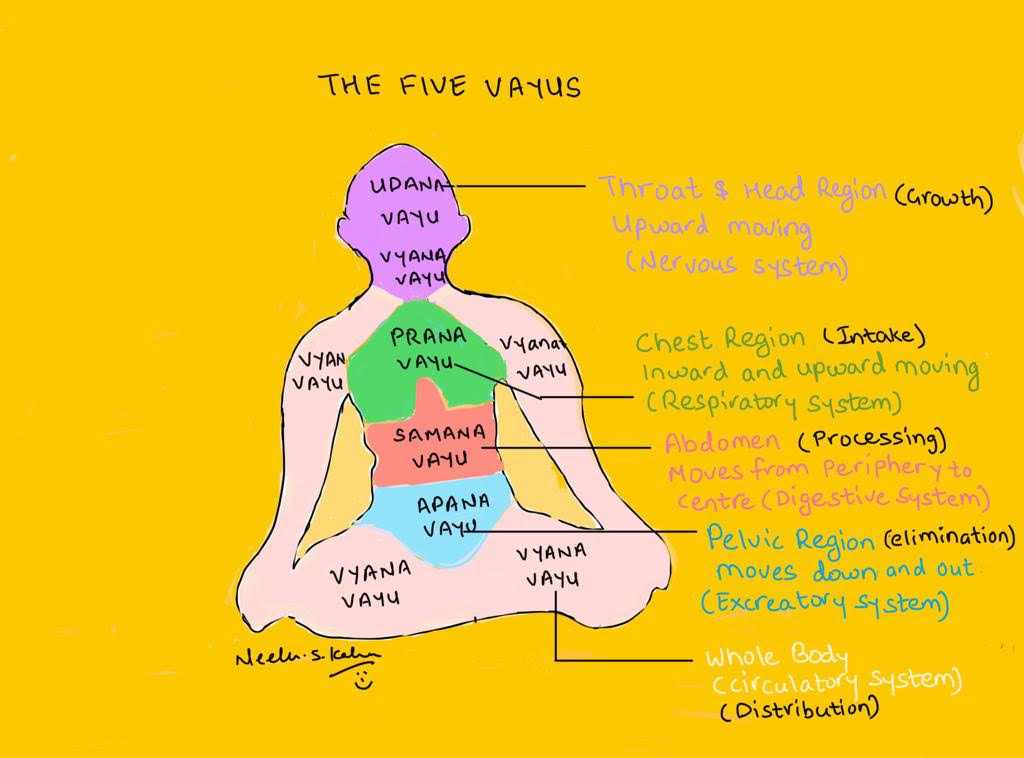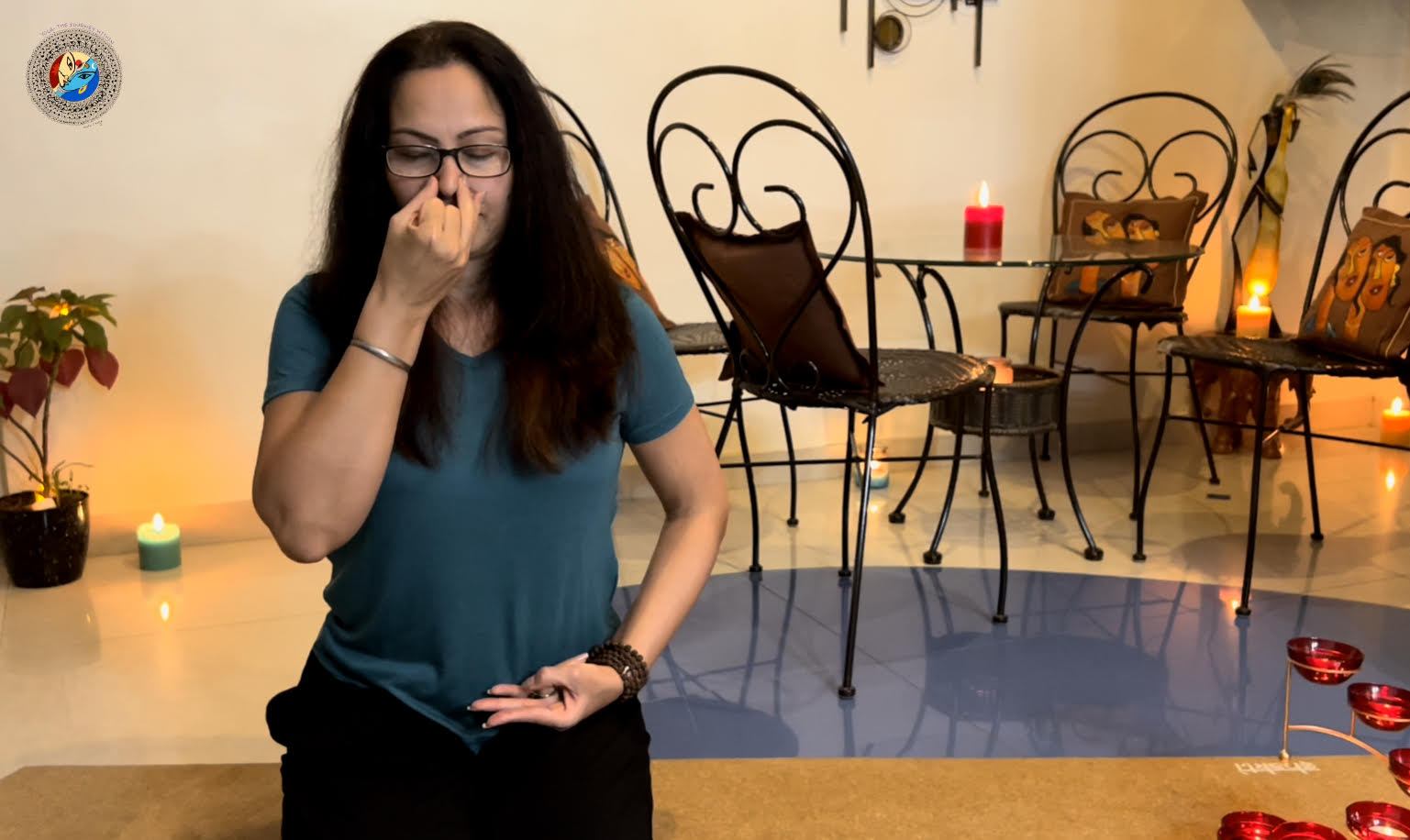Prana, as we all know, is the vital energy force, which keeps us alive; and breath is the medium through which Prana moves. In Pranic body, there are 72,000 subtle invisible energy channels called Nadis, through which Prana flows.
If we wish to live a healthy and happy life, we need to take care of Prana- our body fuel. While we seem to always think of increasing our bank balances to become wealthy, we never seem to think of increasing our Prana and become healthy!
“Health is indeed our real wealth”. We will never be able to enjoy our life at the fullest if we are suffering mentally or physically.
Prana conserved is Prana earned
In simple terms, Prana is energy. Sometimes we feel high in energy and at other times low. Observe a small child; she/he is always active and full of energy, even at the end of the day. However, we adults get tired as the day ends.
A child is never worried about past or future; they enjoy their present and live in the moment.
Worry, overthinking and negative emotions deplete our energy. Worry is really the misuse of our imagination. Mental stress is more exhausting than the physical one. We not only need to enhance Prana in our body, but conserve it as well. Money saved is money earned; similarly Prana conserved is Prana earned.
Prana is everywhere in the universe, but most of the times we are unable to absorb it from all the five elements namely- Fire, Air, Space, Earth, Water. However, all yogic practices like Pranayama, Yoga Asanas, Meditation, Prayers, etc. will help us absorb more Prana.
The functioning of Prana
To understand Human body, modern science looks into the anatomy and physiology. But if you are into yoga, then you need to understand the yogic anatomy by understanding the Subtle (Sukshma) bodies; and one of them is the Pranic body.
By understanding different directions of flow of Prana in our system, we will come to know if there are any issues with either intake, processing, elimination, distribution or growth. For example, if you have any stomach issues, chest infection, you will know which Prana to work upon.
Once Prana enters our system, it is divided into five main categories; having different names depending upon its functions and location. It is just like an organisation; with specific departments taking care of specific responsibilities, while the organisation functions as a whole.
Each Prana works on a specific area and ideally functions in harmony with the others. Imbalance in any one Prana will affect the functioning of others too.
Wind is the force behind most non living movements in nature. Prana is also called Vayu (wind, air) because like the wind, Vayu is responsible for the movement of Prana in our body.
Let’s look at these five types of Vayu in our bodies.
1.Prana Vayu- Governs heart and lung functions
Prana Vayu is the first and most fundamental of all five Vayus. Prana Vayu is like the main chef of a restaurant, who is in charge of getting in all the raw material required for cooking. As our body constantly utilises energy for various activities, it becomes essential to stock it up by drawing in energy from outside the body i.e. from the five elements.
Prana Vayu is responsible for taking in things like food, water, air. It is also associated with the sensory system, which takes in stimuli from everything we see, hear, smell, touch or feel. It draws in energy from people around as well.
Prana Vayu at the mental level
At mental level, it is responsible for intake of knowledge, impressions, ideas, emotions and thoughts. All these are different ways of taking in information.
Therefore, Prana Vayu provides the basic stimulus or energy, which drives us in life from our personal creativity to our productivity at work place, relationship with oneself and others.
The role of Prana Vayu is not only to take in things, but also to obtain energy from them and supply it into our system; which is required for nourishing our body and sustaining life.
It is located in the chest and heart region and is responsible for respiratory and cardiovascular system as well as inhalation. During inhalation, we draw air inwards and our lungs gets filled up with air, which gives it an upward lift. This is why it is said that it has inward and upward movement towards the head.
If we talk in scientific terms, Medulla oblongata, which connects brain to the spinal cord, is responsible for managing heart, breathing and circulation which according to Ayurveda is governed by Pran Vayu.
Pranayama and Yoga improve Prana
When you are stressed and go out into nature for a walk, you must have noticed that it helps in calming the mind. This is because any physical activity stimulates the breathing mechanism.
As explained, Prana Vayu is directly related to respiration. So practising Pranayama regularly will be very helpful to increase the flow of Prana in our system.
A strong Pran Vayu means you are physically and mentally strong, stable and can easily do multitasking. You are receptive and willing to take in food, information, ideas knowledge. Imbalance in this can lead to depression, low feeling, anxiety and chest issues like, cold, bronchitis, asthma or heart related issues.
Some Yoga tips
All chest-opening poses like bow pose, camel pose, cobra, bridge pose and all back bends will activate and stimulate Prana -Vayu. Simply raising your hands up and down will also work.
Apply Prana -Vayu Mudra to enhance the flow of Prana. Don’t hunch and sit like a cashew, Instead, sit erect. This gives more room to your lungs to irrigate well with Prana. Pouring oil on the head (Shirodhara), will help in calming the mind.

2.Samana Vayu – Governs Digestion & Metabolism
Once intake is over by Prana Vayu, then it is time for processing it. We can compare Samana Vayu with the process of cooking, which involves heating, proper mixing of raw material, spices, salt, processing and discarding the waste.
It is located in the abdominal region, in between Prana Vayu (above samana) and Apana vayu (below Samana). It flows inwards from the periphery, towards the centre of the abdomen; and is most concentrated at the navel, moving in a spiral pattern.
The word Samana means being same or equal. This Vayu is responsible for balancing and regulating things. The natural pause between the inhalation and exhalation is Samana. It tries to balance the flow of Prana (inhalation) and Apana (exhalation) during the pause. It can also be understood like the fulcrum of a seesaw, which trying to balance Prana at one end and Apana at the other; thus trying to equalize it.
Samana Vayu – balancing inflows and outflows
Samana is mainly responsible for digestion of food and processing it. It stimulates our gastric glands which strokes our digestive fire and enhances our metabolic process. It churns our food just like a mixer and separates digestible and indigestible food. Indigested food is passed on to the large intestine, which is then thrown out with the help of Apana Vayu.
At the mind level, it is responsible for processing of thoughts, emotions and experiences. In a fast-paced life, we keep on switching from one activity to another. If something important happens, we hardly have time to process it.
Therefore, the emotions keep piling up and we get a feeling of “too much”. We need to give ourselves time and space; so that whatever goes into our body – in the form of food, thought, emotion or experience, first gets processed, in order to get absorbed into our blood stream or mind.
A strong Samana helps in absorbing and retaining what we need and releases what is not required; in an even balance, whether its food or any learning from the experience and thus moving forward in life.
If we talk in scientific terms, we can relate Samana to the Enteric nervous system (ENS). Its nickname is “second brain”, commonly known as the “Gut” feeling.
Whenever we go with our gut feeling, or experience butterflies in our stomach, it is probably due to the hidden second brain present in the digestive walls. Samana is responsible for contraction and relaxation of visceral/ smooth muscles; part of the ENS present in the stomach, intestines, blood vessels; which helps the food to move smoothly along the digestive tract and maintains blood circulation as well.
When the gut health is not good, you will always feel lethargic; both at the mental and physical levels.
How Emotions impact the body
According to ancient wisdom, emotions have a direct impact on our body, mainly the abdominal region, digestion and the lower back consisting of five vertebrae (L1 – L5).
Though it is a bit hard to believe but any kind of psychological stress like anxiety, fear, depression can trigger lower back pain. When you are stressed or anxious, chemical and physical reactions takes place in your body; and there is involuntary tightening of muscles especially in neck, shoulder and lower back region. Prolonged tension can lead to back pain, especially lower back. A tension-induced pain can be treated at home.
Any imbalance in Samana will show up in the body in the form of indigestion, bloating, slow metabolism, obesity and malnourishment.
At the mental level, there will not be clarity of thoughts and you will find it difficult to digest feelings, emotions or experience.
Some Yoga tips for Samana Vayu
We need to focus on asanas and exercises that focus not only on the core, but on the lower back as well; like forward bends and twists (in sitting, standing or lying down position). This will help strengthen the flow of Prana and Apana towards the navel.
As Samana is a balancing breath, all balancing poses like the tree pose will help improve the balance. Deep long inhalation and exhalation of equal count (ratio) involving the diaphragm and pranayama like Surya Bhedan, Samana Mudra and Kriyas like Kapalbhati will also help.
Before going to bed at night, applying mustard or coconut oil or ghee (clarified butter) on the navel and massaging in circular motion will calm your mind, enhances digestive abilities, make your skin glow, good for the eyes too.

Here are links to my short videos on Prana Vayu:
In my next article, we will explore other three Vayus.
Stay Blessed! Keep Smiling !!!
Please do leave your comments at the bottom and do share with others if you like this article.



















Very nice article. looking forward for part 2